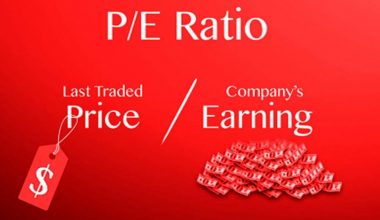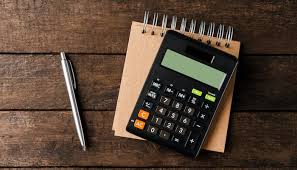Accumulated depreciation occurs when a company records a drop in the value of its fixed assets due to spoilage or leaving them inactive for an extended period. Furthermore, it is the total expense or cost of a company’s revenue on an asset since it was last put to use.
Indeed, every business records the depreciation of its assets at some point. Knowing how to handle depreciation on assets when accumulated in terms of calculation, on the other hand, helps your business stay afloat.
As a result, in this article, we examined how to calculate accumulated depreciation and how it appears on a balance sheet. So, come along with us as we get started.
Understanding Accumulated Depreciation
As previously stated, accumulated depreciation is the total amount of depreciation expense recorded for an asset. In other words, it’s the entire amount of costs devoted to a specific asset during its useful life. Also, the accumulated depreciation account is a contra asset account that appears on a company’s balance sheet, which means it has a credit balance. A credit to a contra-asset account, unlike a conventional asset account, increases its value while a debit diminishes its value. (Read also how to get out of Embezzlement charges)
When an organization records depreciation costs, the same amount is also charged to the accumulated depreciation account, allowing the corporation to reflect both the asset’s cost and total-to-date depreciation. On the balance sheet, this also shows the asset’s net book value.
Eventually, accumulated depreciation appears on the balance sheet as a decrease from the reported gross amount of fixed assets.
A simple Accumulated Depreciation calculation formula is thus: Accumulated depreciation balance= Begining period + Depreciation over time – End period.
Further Illustration On The Above Explanation
To buttress further on the above explanation, here is an illustration. For example, Hilario’s Trucking Company buys a new truck for $20,000 on January 1st. He estimates that the truck will last for 5 years before it is completely worthless and must be disposed of. (Thelostgamer) At the end of the first year, Hilario would record $4,000 in depreciation expense by debiting the expense account and crediting the accumulated depreciation account.
Because the accumulated depreciation account is a balance sheet account, it is not closed at the end of the year, and the $4,000 balance is carried forward to the following year. Hilario would record another $4,000 in expenses at the end of year two, bringing the total to $8,000. This annual entry would be made until the truck was fully depreciated. To put it another way, the accumulated account is equal to the fixed asset account.
Furthermore, as depreciation expenses are charged against assets, the amount of accumulated depreciation for an asset or group of assets grows over time. When an asset is eventually sold or disposed of, the accumulated depreciation associated with that asset is reversed, removing the item from the company’s balance sheet.
What Are Depreciation Expenses?
Depreciation expenses, on the other hand, are the assigned percentage of the cost of a company’s fixed assets that are appropriate for the term. It’s reported as a non-cash expense on the income statement, reducing the company’s net income, while accumulated depreciation appears under related capitalised assets on the balance sheet.
Furthermore, depreciation expense is debited and accumulated depreciation is credited on the balance sheet for accounting reasons. However, in some cases, the accumulated depreciation account is debited or eliminated. For example, an item has been in use for eight years and has accumulated $100,000 in depreciation.
If the company sells the asset after 8 years, the account must be wiped out because the asset is no longer relevant to the company. As a result, the asset account would be credited, while the accumulated depreciation account would be debited, and there would be a gain or loss based on the fair value of the asset and the amount received.
Because the periodic monthly depreciation entry does not involve a cash transaction, depreciation expenses are classified as non-cash expenses. As a result, the depreciation expense is added back to the statement of cash flows created using the indirect approach to determine cash flow from operations.
When undertaking financial modelling, financial analysts build a depreciation schedule to track the overall depreciation over the life of an asset.
Accumulated Amortization/Depletion
Accumulated amortization and depletion function similarly to accumulated depreciation; they are all contra asset accounts. The naming convention is simply different depending on the asset’s nature. Depreciation is the term used to describe the loss of tangible assets such as property or plant and equipment.
It is called amortization for intangible assets such as patents, licenses, or trademarks, and depletion for natural resource-related assets – for example mines or oil platforms. When amortization or depletion expense for the year is recorded, the corresponding accumulated contra asset accounts are credited
Accumulated Depreciation Calculation
There are basically several methods that the entities could use to calculate accumulated depreciation. Still, in the article, we will discuss two methods that are normally used in the calculation of depreciation for the corporate fixed assets and how accumulated depreciation is related to the depreciation. Typical depreciation methods can include straight line and double-declining balance.
#1. Single Line Method
The formula for the straight-line method is thus:
Depreciation Factor x (1/Lifespan) x Remaining Book Value = Annual Depreciation
Follow these steps to calculate this to a monthly accumulated depreciation formula:
- Firstly, to figure out how much is left to be depreciated, subtract the asset’s salvage value from its total cost.
- Subtract the asset’s value from the number of years it will last.
- Finally, calculate the monthly depreciation by multiplying this figure by 12.
#2. Declining Balance Method
Secondly, you could employ declining balance approach in the calculation of accumulated depreciation. This approach puts a greater emphasis on the asset’s depreciation upfront. It requires that an asset gets maximum use when it’s brand new, and it’s appropriate for assets like electronic equipment and cars. As a result, the amount of depreciation varies from year to year. In addition, The formula for double-declining depreciation is, therefore:
Depreciation Factor x (1/Lifespan) x Remaining Book Value = Annual Depreciation
Furthermore, divide your result by 12 to convert it to a monthly depreciation rate.
How to Calculate Accumulated Depreciation
Calculation of accumulated depreciation is determined by subtracting the estimated scrap/salvage value at the end of its useful life from the initial cost of an asset. And then divided by the number of the estimated useful life of an asset. Even more, you can calculate accumulated depreciation by the sum of all of the depreciation charges to assets from the beginning up to the latest reporting period
See the example of accumulated depreciation expenses below:
Let’s say, for example, the opening balance of accumulated depreciation as it appears on the sheet on the 1st Jan 2019 is USD400,000 and the depreciation charge in the year 2019 is USD40,000, then the entries are as follows:
Dr_Depreciation expenses 40,000 (P&L)
Cr_Accumulated depreciation 40,000 (BS)
Total accumulated depreciation expenses at the end of 31 December 2019 is USD440,000.
Accumulated depreciation on 31 December 2019 is equal to the opening balance amount of USD400,000 plus depreciation charge during the year amount USD40,000.
Now, let’s discuss how to calculate accumulated depreciation.
For instance, we have assets A and B with USD 500,000 and USD400,000, respectively, and useful life 10 and 20 years.
| Description | Date of purchase in (Rs.) | Cost of purchase in (Rs.) | Scrap value in (Rs.) | Useful life (In years) | Method |
| A | Jan.1st2002 | 500,000 | 100, 000 | 10 | Straight Line |
| B | July 1st2002 | 400,000 | 80, 000 | 20 | Diminishing |
The straight-line method’s depreciation formula will be thus:
(Cost of Asset – Scrap Value) / Useful Lifetime = Depreciation Expense.
= (500,000 – 100,000) / 10
Note: Scrap Value is equivalent to 400,000, which is also the depreciable value. Hence, we can’t depreciate the asset’s scrap value (100,000), which is the asset’s cost after its useful life expires.
So, the depreciation expense is equal to 400,000 by 10.
= 40,000 per year
Accordingly, the accumulated depreciation will be calculated by adding all of the depreciation expenses up to the reporting date.
Assume the fiscal year of the corporation finishes on June 30th each year. Since machine A was only active for six months this year, we can’t charge the depreciation as a whole in the Income Statement for the Financial Year 2002-2003.
As a result, we’ll multiply the annual depreciation expense by 12 and split it by the number of months it’ll be useful. .e.
(40,000 * 6) / 12 = Depreciation Expense
(20,000) (depreciation for 6 months)
Using the Straight Line Method to Compile an Accumulated Schedule:
This calculation will be done for Asset A’s first and last years where appreciation expenses and cumulative depreciation will now appear as follows:
| S/N | Accounting period | Cost of Asset | Depreciation | Accumulated Depreciation | Current value |
| 1 | 2003 | 500,000 | 20,000 | 20,000 | 480,000 |
| 2 | 2004 | 480,000 | 40,000 | 60,000 | 440,000 |
| 3 | 2005 | 440,000 | 40,000 | 100,000 | 400,000 |
| 4 | 2006 | 400,000 | 40,000 | 140,000 | 360,000 |
| 5 | 2007 | 360,000 | 40,000 | 180,000 | 320,000 |
| 6 | 2008 | 320,000 | 40,000 | 220,000 | 280,000 |
| 7 | 2009 | 280,000 | 40,000 | 260,000 | 240,000 |
| 8 | 2010 | 240,00 | 40,000 | 300,000 | 200,000 |
| 9 | 2011 | 200,000 | 40,000 | 340,000 | 160,000 |
| 10 | 2012 | 160,000 | 40,000 | 380,000 | 120,000 |
| 11 | 2013 | 120,000 | 20,000 | 400,000 | 100,000 |
Schedule of Accumulated Depreciation Using the Declining Method:
Let’s use the Diminishing or Declining Method in the calculation of accumulated depreciation for Asset B.
To calculate the Accumulated Depreciation Expenses during the first year of its useful life, we use a percentage of the face value.
Also, we apply the same proportion to the booked of written down value of the asset over the following few years, but the value of the % is not provided in the data we have. However, using the formula below, we can calculate it.
Rate of Depreciation = 1 – (Scrap value / cost value)1/n
= 1 (80,000 / 400,000)1/20
= 7.73 when rounded = 8%
Note: (n = number of years)
Now, For Asset B, the calculation of the depreciation expense table will be as follows.
| Financial year | Cost value | %age | Depreciation of expense | Accumulated depreciationExp | Written down value of the Asset+(cost – Depreciation |
| 2003 | 400,000 | 8 | 32,000 | 32, 000 | 368,000 |
| 2004 | 368, 000 | 8 | 29,440 | 61,440 | 338,560 |
| 2005 | 338,560 | 8 | 27,085 | 88,525 | 311,475 |
| 2006 | 311,475 | 8 | 24,918 | 113,443 | 286,557 |
| 2007 | 286,557 | 8 | 22,925 | 136,367 | 263,633 |
| 2008 | 263,633 | 8 | 21,091 | 157,458 | 242,542 |
| 2009 | 242,542 | 8 | 19,403 | 176,861 | 223,139 |
| 2010 | 223,139 | 8 | 17,851 | 194,712 | 205,288 |
| 2011 | 205,288 | 8 | 16,423 | 211,135 | 188,865 |
| 2012 | 188,865 | 8 | 15,109 | 226,245 | 173,755 |
| 2013 | 173,755 | 8 | 13,900 | 240,145 | 159,855 |
What is accumulated depreciation on a balance sheet?
The total depreciation that has been deducted from an asset’s value over time is known as accumulated depreciation. On the balance sheet, fixed assets are listed as a debit and accumulated depreciation is listed as a credit that cancels out the asset.
Is accumulated depreciation asset or liability?
On the balance sheet, under the heading Property, Plant and Equipment, accumulated depreciation is shown as an asset account with a credit balance called a long-term contra asset account.
Is Accumulated depreciation a gain or loss?
The carrying value of the asset is the asset’s original purchase price less any accrued impairment charges and all accumulated depreciation. From the asset’s sale price, deduct this carrying amount. A gain has occurred if the remainder is positive. A loss has occurred if the remaining is negative.
What is the difference between depreciation and accumulated depreciation?
While depreciation charges show how much of an item is used in the current year, accumulated depreciation is a measurement of the entire amount of wear and tear an asset has accrued during its lifetime.
What kind of asset is accumulated depreciation?
A single asset’s accumulated depreciation is the total amount of depreciation expense attributed to the asset since it was first used. It is a contra-asset account, which means that it is a negative asset account that reduces the balance of the asset account it is often linked to.
Is depreciation a liability or loss?
Depreciation is anything but an asset because the balances recorded in the accounts don’t relate to anything that will add financial value to the company over multiple accounting periods.
Is Accumulated depreciation a credit or debit?
Due to the fact that accumulated depreciation adds up the whole amount of depreciation expense billed against a fixed asset, it has a positive balance. This account is linked to the fixed assets line item on the balance sheet such that the sum of the two accounts indicates the fixed assets’ remaining book value.
Is accumulated depreciation an expense?
A fixed asset’s total accumulated depreciation is the sum of all depreciation expenses that have been recorded thus far.
Conclusion
To wrap it up, on the face of financial accounts, total accumulated depreciation after the period rarely appears. Only the net of fixed assets is visible.
However, in the notes to financial statements, you can see how much the costs of fixed assets are, how much fixed assets are added during the year or period, how much depreciation expenses are charged during the year, and how much total accumulated depreciation is up to the end of the reporting period.
It’s worth noting, however, that due to the change in depreciation procedure, accrued depreciation charges aren’t being charged
Related Articles
- EARNINGS BEFORE TAX (EBT): Overview, Formula, Importance
- Can Undervalued Currency Boost an Economy?
- ACCUMULATED AMORTIZATION: Definition And All You Should Know
- Profit and Loss Statement Explained!!! How to Read & Create P&L Statement
- DEPRECIATION ACCOUNTING: Definition, Methods, Formula & All you should know.
- CONTRA ASSET ACCOUNT: Definition, Types, Examples & How They Work
Frequently Asked Questions Accumulated Depreciation
What is accumulated depreciation on balance sheet?
It is the running total of depreciation that has been expensed against the value of an asset. Fixed assets are recorded as a debit on the balance sheet while cumulative depreciation is recorded as a credit–offsetting the asset
What is the difference between depreciation and cumulative depreciation?
Depreciation expense is the amount that a company’s assets drop for a single period (e.g, quarter or the year), while cumulative depreciation is the total amount of wear to date
Why is cumulative depreciation a credit?
Accumulated depreciation has a credit balance because it aggregates the amount of depreciation expense charged against a fixed asset
How do you calculate depreciation?
You calculate each period’s depreciation amount by using the formula: annual depreciation rate/ number of periods in the year. For example, in a 12 period year, if an asset’s expected life is 60 months, the annual depreciation rate for the asset is 12/60 = 20%, and the depreciation rate per period is 20% /12 = 0.0167%
Is it better to depreciate or expense?
Usually, it’s better to expense an item than to depreciate because money has a time value. If you expense the item, you get the deduction in the current tax year, and you can immediately use the money the expense deduction has freed from taxes.
{
“@context”: “https://schema.org”,
“@type”: “FAQPage”,
“mainEntity”: [
{
“@type”: “Question”,
“name”: “What is accumulated depreciation on balance sheet?”,
“acceptedAnswer”: {
“@type”: “Answer”,
“text”: “
It is the running total of depreciation that has been expensed against the value of an asset. Fixed assets are recorded as a debit on the balance sheet while cumulative depreciation is recorded as a credit–offsetting the asset
“
}
}
, {
“@type”: “Question”,
“name”: “What is the difference between depreciation and cumulative depreciation?”,
“acceptedAnswer”: {
“@type”: “Answer”,
“text”: “
Depreciation expense is the amount that a company’s assets drop for a single period (e.g, quarter or the year), while cumulative depreciation is the total amount of wear to date
“
}
}
, {
“@type”: “Question”,
“name”: “Why is cumulative depreciation a credit?”,
“acceptedAnswer”: {
“@type”: “Answer”,
“text”: “
Accumulated depreciation has a credit balance because it aggregates the amount of depreciation expense charged against a fixed asset
“
}
}
, {
“@type”: “Question”,
“name”: “How do you calculate depreciation?”,
“acceptedAnswer”: {
“@type”: “Answer”,
“text”: “
You calculate each period’s depreciation amount by using the formula: annual depreciation rate/ number of periods in the year. For example, in a 12 period year, if an asset’s expected life is 60 months, the annual depreciation rate for the asset is 12/60 = 20%, and the depreciation rate per period is 20% /12 = 0.0167%
“
}
}
, {
“@type”: “Question”,
“name”: “Is it better to depreciate or expense?”,
“acceptedAnswer”: {
“@type”: “Answer”,
“text”: “
Usually, it’s better to expense an item than to depreciate because money has a time value. If you expense the item, you get the deduction in the current tax year, and you can immediately use the money the expense deduction has freed from taxes.
“
}
}
]
}






